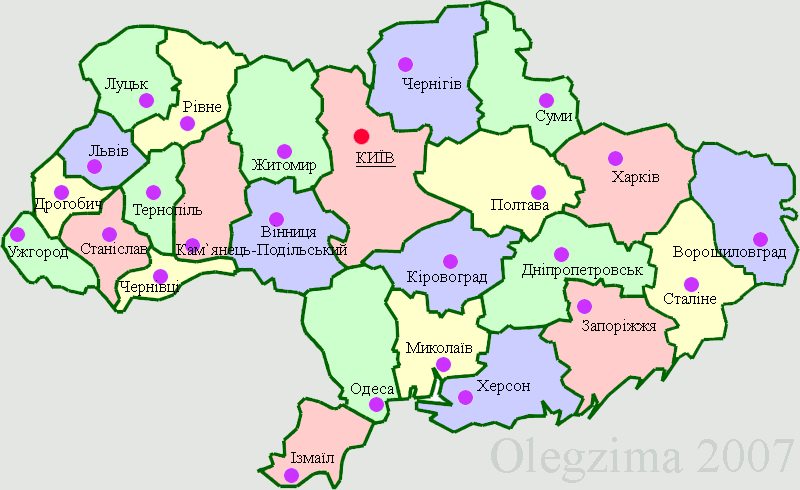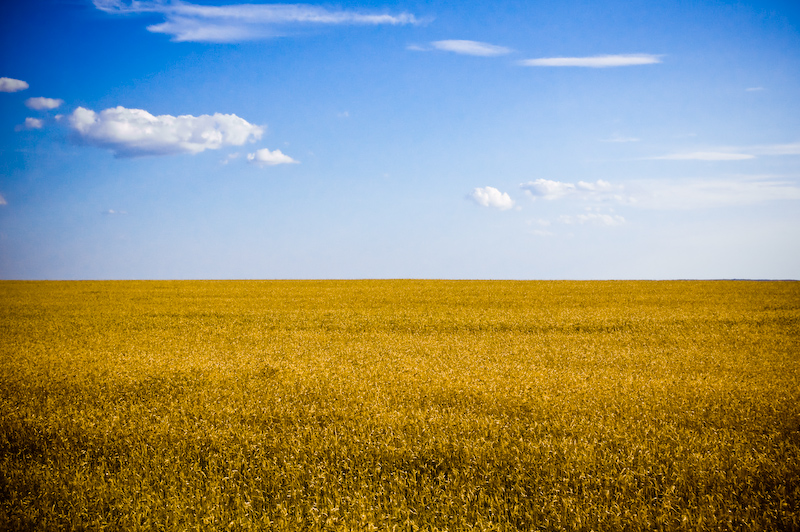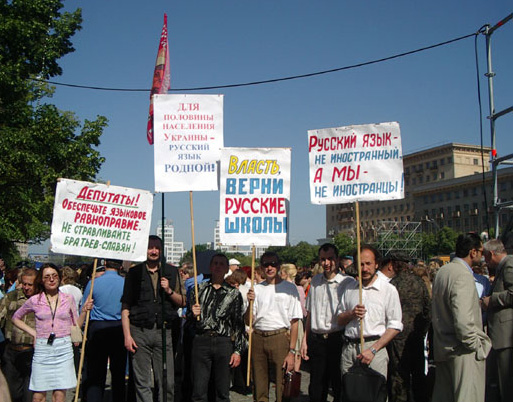|
Barvinok, Kherson Oblast , the primary languages of the village's inhabitants were:
Barvinok is a village in Ukraine, located inside the Chornobaivka rural hromada, Kherson Raion, Kherson Oblast. The village is currently under Russian occupation as a result of the 2022 Russian invasion of Ukraine. Demographics According to the 1989 U.S.S.R. census, 119 people lived in the village, of whom 56 were men and 63 were women. According to the 2001 Ukrainian census, that number had grown to 127. Languages According to the 2001 Ukrainian census The Ukrainian Census of 2001 is to date the only census of the population of independent Ukraine. It was conducted by the State Statistics Committee of Ukraine on 5 December 2001, twelve years after the last Soviet Union census in 1989. References External links [...More Info...] [...Related Items...] OR: [Wikipedia] [Google] [Baidu] |
Oblasts Of Ukraine
An oblast ( uk, о́бласть; ) in Ukraine, often called a region or province, is the main type of first-level administrative division of the country. Ukraine's territory is divided into 24 oblasts, as well as one autonomous republic, Crimea, and two cities with special status, Kyiv and Sevastopol. Ukraine is a unitary state, thus the oblasts do not have much legal scope of competence other than that which is established in the Ukrainian Constitution and by law. Articles 140–146 of Chapter XI of the constitution deal directly with local authorities and their competency. Oblasts are subdivided into raions (districts), each oblast having from 3 to 10 raions following the July 2020 reform. General characteristics In Ukraine, the term ''oblast'' denotes a primary administrative division. Under the Russian Empire and into the 1920s, Ukraine was divided between several governorates. The term ''oblast'' was introduced in 1932 by Soviet authorities when the Ukrainian SSR was ... [...More Info...] [...Related Items...] OR: [Wikipedia] [Google] [Baidu] |
Kherson Oblast
Kherson Oblast ( uk, Херсо́нська о́бласть, translit=Khersónsʹka óblastʹ, ), also known as Khersonshchyna ( uk, Херсо́нщина, ), is an oblast (province) in southern Ukraine, currently claimed and partly occupied by Russia. It is located just north of Crimea. Its administrative center is Kherson, on the west bank of the Dnieper which bisects the oblast. The area of the region is 28,461 km2 and the population It is considered the 'fruit basket' of the country, as much of its agricultural production is dispersed throughout the country, with production peaking during the summer months. Most of the area of the oblast has been under Russian military occupation since the 2022 Russian invasion of Ukraine. Territory in the northwest, including Kherson city, was recaptured by Ukraine in the southern counteroffensive. On 30 September 2022 Russia annexed the Donetsk (Donetsk People's Republic), Luhansk (Luhansk People's Republic), Zaporizhzhia, and ... [...More Info...] [...Related Items...] OR: [Wikipedia] [Google] [Baidu] |
Kherson Raion
Kherson Raion ( uk, Херсонський район, russian: Херсонский район) is a raion (district) of Kherson Oblast, Ukraine. It was created in July 2020 as part of the reform of administrative divisions of Ukraine. The center of the raion is the city of Kherson. Two abolished raions, Bilozerka and Oleshky Raions, as well as Kherson Municipality, were merged into Kherson Raion. Population: Subdivisions At the time of establishment in 2020, the Kherson administrative district was subdivided into 10 hromadas: * Bilozerka settlement hromada with the administration in the urban-type settlement of Bilozerka, transferred from Bilozerka Raion; * Chornobaivka rural hromada with the administration in the village of Chornobaivka, transferred from Bilozerka Raion; * Darivka rural hromada with the administration in the village of Darivka, transferred from Bilozerka Raion; * Kherson urban hromada, with the administration in the city of Kherson, transferred from Kh ... [...More Info...] [...Related Items...] OR: [Wikipedia] [Google] [Baidu] |
Raions Of Ukraine
Raions of Ukraine (often translated as "districts"; Ukrainian: ра́йон, tr. ''raion''; plural: райо́ни, tr. ''raiony'') are the second level of administrative division in Ukraine, below the oblast. Raions were created in a 1922 administrative reform of the Soviet Union, to which Ukraine, as the Ukrainian Soviet Socialist Republic, belonged. On 17 July 2020, the Verkhovna Rada (Ukraine's parliament) approved an administrative reform to merge most of the 490 raions, along with the "cities of regional significance", which were previously outside the raions, into just 136 reformed raions. Most tasks of the raions (education, healthcare, sport facilities, culture, and social welfare) were taken over by new hromadas, the subdivisions of raions. [...More Info...] [...Related Items...] OR: [Wikipedia] [Google] [Baidu] |
Hromada
A hromada ( uk, територіальна громада, lit=territorial community, translit=terytorialna hromada) is a basic unit of administrative division in Ukraine, similar to a municipality. It was established by the Government of Ukraine on 12 June 2020. Similar terms exist in Poland (''gromada'') and in Belarus (''hramada''). The literal translation of this term is "community", similarly to the terms used in western European states, such as Germany ('' Gemeinde''), France (''commune'') and Italy (''comune''). History In history of Ukraine and Belarus, hromadas appeared first as village communities, which gathered their meetings for discussing and resolving current issues. In the 19th century, there were a number of political organizations of the same name, particularly in Belarus. Prior to 2020, the basic units of administrative division in Ukraine were rural councils, settlement councils and city councils, which were often referred to by the generic term ''hromada ... [...More Info...] [...Related Items...] OR: [Wikipedia] [Google] [Baidu] |
Chornobaivka Rural Hromada
The Chornobaivka rural hromada is an amalgamated hromada in Ukraine, in Kherson Raion of Kherson Oblast. Its administrative center is Chornobaivka. Population: Settlements The hromada contains 9 settlements: Barvinok, Blahodatne, Zelenyi Hai, Kyselivka, , , Posad-Pokrovske, Soldatske, Chornobaivka (seat of the hromada), and one village — . History During the 2022 Russian invasion of Ukraine, the Chornobaivka rural hromada was included within the list of amalgamated hromadas of Ukraine Ukraine ( uk, Україна, Ukraïna, ) is a country in Eastern Europe. It is the second-largest European country after Russia, which it borders to the east and northeast. Ukraine covers approximately . Prior to the ongoing Russian inv ... the inhabitants of which could seek support from the state due to being either under Russian military occupation or to being within fighting zone. References 2017 establishments in Ukraine Hromadas of Kherson Oblas ... [...More Info...] [...Related Items...] OR: [Wikipedia] [Google] [Baidu] |
Ukraine
Ukraine ( uk, Україна, Ukraïna, ) is a country in Eastern Europe. It is the second-largest European country after Russia, which it borders to the east and northeast. Ukraine covers approximately . Prior to the ongoing Russian invasion, it was the eighth-most populous country in Europe, with a population of around 41 million people. It is also bordered by Belarus to the north; by Poland, Slovakia, and Hungary to the west; and by Romania and Moldova to the southwest; with a coastline along the Black Sea and the Sea of Azov to the south and southeast. Kyiv is the nation's capital and largest city. Ukraine's state language is Ukrainian; Russian is also widely spoken, especially in the east and south. During the Middle Ages, Ukraine was the site of early Slavic expansion and the area later became a key centre of East Slavic culture under the state of Kievan Rus', which emerged in the 9th century. The state eventually disintegrated into rival regional po ... [...More Info...] [...Related Items...] OR: [Wikipedia] [Google] [Baidu] |
Soviet Census (1989)
The 1989 Soviet census (russian: Всесоюзная перепись населения 1989, lit=1989 All-Union Census), conducted between 12 and 19 January of that year, was the last one that took place in the Soviet Union. The census found the total population to be 286,730,819 inhabitants. In 1989, the Soviet Union ranked as the third most populous in the world, above the United States (with 248,709,873 inhabitants according to the 1990 census), although it was well below China and India. Statistics In 1989, about half of the Soviet Union's total population lived in the Russian SFSR, and approximately one-sixth (18%) of them in the Ukrainian SSR. Almost two-thirds (65.7%) of the population was urban, leaving the rural population with 34.3%.Encyclopædia Britannica Book of the Year 1991, Soviet Union, page 720. In this way, its gradual increase continued, as shown by the series represented by 47.9%, 56.3% and 62.3% of 1959, 1970 and 1979, respectively. [...More Info...] [...Related Items...] OR: [Wikipedia] [Google] [Baidu] |
Ukrainian Census (2001)
The Ukrainian Census of 2001 is to date the only census of the population of independent Ukraine. It was conducted by the State Statistics Committee of Ukraine on 5 December 2001, twelve years after the last Soviet Union census in 1989.In 2021, there will most likely be no all-Ukrainian census - Minister (21 April 2020) The next Ukrainian census was planned to be held in 2011 but has been repeatedly postponed [...More Info...] [...Related Items...] OR: [Wikipedia] [Google] [Baidu] |
Ukrainian Language
Ukrainian ( uk, украї́нська мо́ва, translit=ukrainska mova, label=native name, ) is an East Slavic language of the Indo-European language family. It is the native language of about 40 million people and the official state language of Ukraine in Eastern Europe. Written Ukrainian uses the Ukrainian alphabet, a variant of the Cyrillic script. The standard Ukrainian language is regulated by the National Academy of Sciences of Ukraine (NANU; particularly by its Institute for the Ukrainian Language), the Ukrainian language-information fund, and Potebnia Institute of Linguistics. Comparisons are often drawn to Russian, a prominent Slavic language, but there is more mutual intelligibility with Belarusian,Alexander M. Schenker. 1993. "Proto-Slavonic," ''The Slavonic Languages''. (Routledge). pp. 60–121. p. 60: " hedistinction between dialect and language being blurred, there can be no unanimity on this issue in all instances..."C.F. Voegelin and F.M. Voegelin. 19 ... [...More Info...] [...Related Items...] OR: [Wikipedia] [Google] [Baidu] |
Russian Language In Ukraine
Russian is the most common first language in the Donbas and Crimea regions of Ukraine and the city of Kharkiv, and the predominant language in large cities in the eastern and southern portions of the country. The usage and status of the language is the subject of political disputes. Ukrainian is the country's only state language since the adoption of the 1996 Constitution, which prohibits an official bilingual system at state level but also guarantees the free development, use and protection of Russian and other languages of national minorities. In 2017 a new ''Law on Education'' was passed which restricted the use of Russian as a language of instruction. Nevertheless, Russian remains a widely used language in Ukraine in pop culture and in informal and business communication. History of Russian language in Ukraine The East Slavic languages originated in the language spoken in Rus in the medieval period. Significant differences in spoken language in different regions began a ... [...More Info...] [...Related Items...] OR: [Wikipedia] [Google] [Baidu] |
Moldovan Language
Moldovan (Romanian alphabet, Latin alphabet: ''limba moldovenească''; Moldovan Cyrillic alphabet: лимба молдовеняскэ), also known historically as Moldavian, is one of the two local names of the Romanian language in Moldova. "Moldovan" is declared the official language in Article 13 of the Constitution of Moldova, constitution adopted in 1994, while the 1991 Declaration of Independence of Moldova uses the name "Romanian". In 2003, the Moldovan parliament adopted a law defining "Moldovan" and "Romanian" as :wikt:glottonym, glottonyms for the same language. In 2013, the Constitutional Court of Moldova interpreted that Article 13 of the constitution is superseded by the Declaration of Independence, thus giving official status to the name "Romanian". The List of states with limited recognition, breakaway region of Transnistria continues to recognize "Moldovan" as one of its official languages, alongside Russian language, Russian and Ukrainian language, Ukrainia ... [...More Info...] [...Related Items...] OR: [Wikipedia] [Google] [Baidu] |





